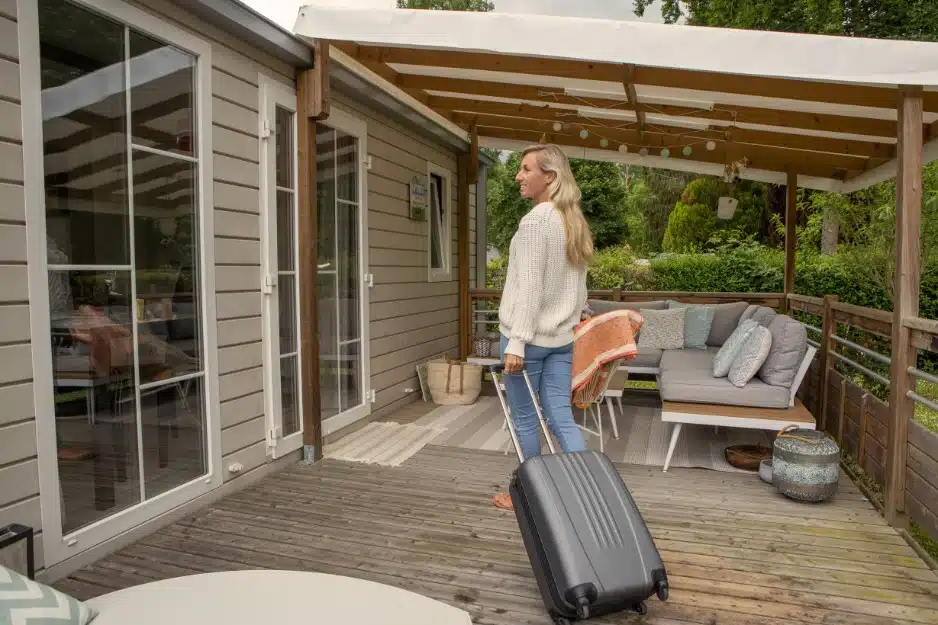In today’s changing travel landscape, one phrase captures a powerful shift in how people explore the world: travel for depth not distance. For years, the idea of travel centered around escape—getting away from routines, work, and everyday stress. But now, travelers are seeking something more meaningful.
They’re no longer satisfied with going farther—they want to go deeper. This evolution from surface-level tourism to meaningful engagement represents one of the biggest transformations in modern travel. People want to immerse, connect, and grow. They want to travel for depth not distance—to create memories that feel transformative rather than just photogenic.
Let’s explore why this shift is happening, what it means for travelers and hosts, and how this mindset is shaping the future of global tourism.
1. The Decline of the “Escape” Mindset

For decades, travel was marketed as the ultimate escape. A beach vacation or faraway resort meant freedom from reality. But now, many travelers are realizing that simply changing scenery doesn’t necessarily create happiness or growth.
Today’s traveler wants engagement—they want to understand a place, its people, its rhythm. The goal is not to escape life but to experience it more deeply. Travel for depth not distance captures that longing for connection and meaning.
A recent study found that 73% of global travelers seek authentic, culture-driven experiences rather than commercial attractions (amraandelma.com). This shows a clear shift away from the escapist mentality.
2. What “Travel for Depth Not Distance” Really Means

So what does it mean to travel for depth not distance? It’s not about how far you go—it’s about how deeply you engage. This mindset emphasizes immersion, authenticity, and reflection over rushing or collecting passport stamps.
Here are a few ways travelers embody this approach:
-
Immersive experiences: joining local cooking classes, learning regional crafts, or sharing meals with locals.
-
Slow travel: spending more time in one place instead of hopping from city to city.
-
Purposeful trips: choosing destinations that inspire personal growth or support sustainability.
Experiential travel, often called “slow tourism,” encourages people to engage with a destination’s culture and rhythm at a human pace (en.wikipedia.org).
3. Why Travelers Crave Depth

The rise of travel for depth not distance is driven by emotional, social, and environmental factors:
-
Authenticity: Social media has flooded travel feeds with picture-perfect but shallow experiences. People want real stories, not staged moments.
-
Connection: Modern life is busy and digital. Deep travel offers the rare chance to reconnect—with people, nature, or oneself.
-
Sustainability: Travelers are more conscious of their footprint and prefer fewer, more meaningful trips.
-
Fulfillment: Instead of escaping stress, people want to discover something about themselves through exploration.
As McKinsey notes, “the quality of local experiences is now a key factor in destination choice” (mckinsey.com).
4. The Rise of Experiential Travel

The travel industry is catching on fast. Boutique hotels, eco-lodges, and vacation rentals are reinventing their offerings around experience rather than luxury. Guests don’t just want a comfortable bed—they want stories to tell.
Hosts who embrace travel for depth not distance often:
-
Partner with local artisans or guides to offer cultural workshops.
-
Provide curated experiences like farm-to-table dinners or guided neighborhood tours.
-
Encourage guests to stay longer to absorb the culture and atmosphere.
According to Travel Daily News, “slow travel and tailor-made experiences” are now central to how people explore the world.
5. From Checking Out to Tuning In

One of the core ideas behind travel for depth not distance is presence. Traditional tourism is often about checking out—disconnecting from the world. But the new wave of travelers wants to tune in.
Instead of rushing through ten attractions in a day, they’d rather sit at a café, talk with locals, and absorb the rhythm of everyday life. The depth comes from mindfulness—being fully present where you are.
This conscious form of travel has even been linked to greater happiness and reduced stress, as travelers feel more grounded and connected during and after their journeys (psychologytoday.com).
6. What It Means for Hosts and Experience Providers

For property owners and travel curators, this shift represents a major opportunity. To align with travel for depth not distance, focus on experience design, not just amenities.
Here’s how to bring this concept to life:
-
Highlight authenticity in your listing: describe the story behind your property, the neighborhood, and local traditions.
-
Offer engagement opportunities: create optional experiences like local food tours, art sessions, or cultural events.
-
Encourage slow travel: offer discounts for extended stays or highlight what guests can gain from staying longer.
-
Promote connection: provide community spaces or group activities where travelers can meet locals and each other.
By aligning your property with travel for depth not distance, you attract travelers who stay longer, leave glowing reviews, and value meaningful hospitality.
7. Examples of Depth-Focused Travel

Real-world examples bring the concept to life:
-
A Texas vacation rental invites guests to fish with local experts and enjoy community cookouts by the river.
-
A boutique villa in Bali offers cultural immersion through daily language lessons and market tours.
-
A family cabin in Colorado encourages unplugged time—no TV, just hiking, conversation, and reflection.
Each of these examples embodies travel for depth not distance—where the goal is not to go farther but to connect more deeply.
8. The Power of Slow and Sustainable Travel

Environmental awareness is also pushing travelers toward travel for depth not distance. By spending more time in fewer destinations, travelers reduce carbon footprints and contribute more to local economies.
The United Nations World Tourism Organization (UNWTO) emphasizes that “sustainable tourism depends on deep local engagement and longer stays” (unwto.org).
In essence, slower and deeper travel isn’t just better for the traveler—it’s better for the planet.
9. Marketing “Depth” in a Digital World

To reach the modern traveler, storytelling must reflect depth. Use visuals and language that emphasize emotion, connection, and purpose.
For example:
-
Instead of saying, “Beautiful beachfront home,” say, “Experience sunrise rituals with locals in a coastal village.”
-
Instead of “Quiet retreat,” say, “A place to slow down and rediscover presence.”
The more you integrate the philosophy of travel for depth not distance into your messaging, the more your audience will resonate with it.
As Forbes highlights, experiential and intentional travel are the fastest-growing segments of the travel market.
10. The Future: Meaning Over Mileage

The future of travel lies not in how far we go but in how deeply we connect. Travel for depth not distance reflects a cultural reawakening—one where travelers want transformation, not just relaxation.
People are realizing that distance alone doesn’t create joy; depth does. The next era of tourism will focus on meaning over mileage, engagement over escape, and connection over convenience.
For hosts, guides, and travelers alike, embracing this mindset means being part of a more mindful, sustainable, and fulfilling future.
Final Thoughts
The shift toward travel for depth not distance is more than a passing trend—it’s a philosophical realignment of what travel means.
It asks us to slow down, open up, and be present—to find beauty not just in distant lands but in genuine moments of connection.
If you create, host, or experience travel that helps people feel more alive, then you’re already part of this global movement toward depth, meaning, and mindful exploration.
Because in the end, the best journeys aren’t measured by miles—but by moments that move us.
